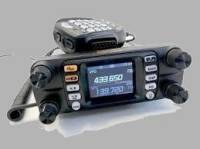|
Click The Radio Image On The Left To Return To Homepage Feel Free To Copy Any Information On The Webpages |
| |
|
Which Is Better Slx 5X 36mm GenIII Prism Scope Or SLx 5X MicroPrism™ Scope
Incorrect Information Posting On Internet Source Unknown
Choosing between the Primary Arms SLx 5X 36mm GenIII Prism Scope and the SLx 5X MicroPrism Scope depends on your specific needs, but generally, the SLx 5X 36mm-GenIII Prism Scope is considered the better choice due to its larger field of view and potentially improved clarity thanks to the larger objective lens diameter (36mm) compared to the Micro Prism's smaller lens size, while still offering the benefits of a prism optic.
The above information published on the Internet is INCORRECT. Below is the correct information.
For those that are considering the purchase of one of these two scopes the advertised information on the Internet is “INCORRECT.” The real truth is that the SLx 5X 36mm GenIII Scope field of view at 100 yards is 18.8 feet and the SLx 5X MicroPrism Scope field of view at 100 yards is 21 feet.
The SLx 5X Micro Prism Scope is everything that the SLx 5X 36mm-GenIII is, plus it’s lighter and considerably more compact. This helps to reduce overall weight of your rifle and a lower profile. Don’t get me wrong, they’re both great scopes, I own both and they’re an outstanding value, but if you’re in the market for a prism scope and choosing between the two, purchase the SLx 5X Micro Prism Scope. Technology like everything else whether a computer or a rifle scope continues to improve, and don’t believe everything you read on the Internet.
Bob Krueger, AB7CQ Web Administrator 146.920/146.320 PL 123.0 444.600 / 449.600 PL 100 Repeater IRLP Node: 7515 PL 114.8 ab7cqradio@ebidpal.com
|
